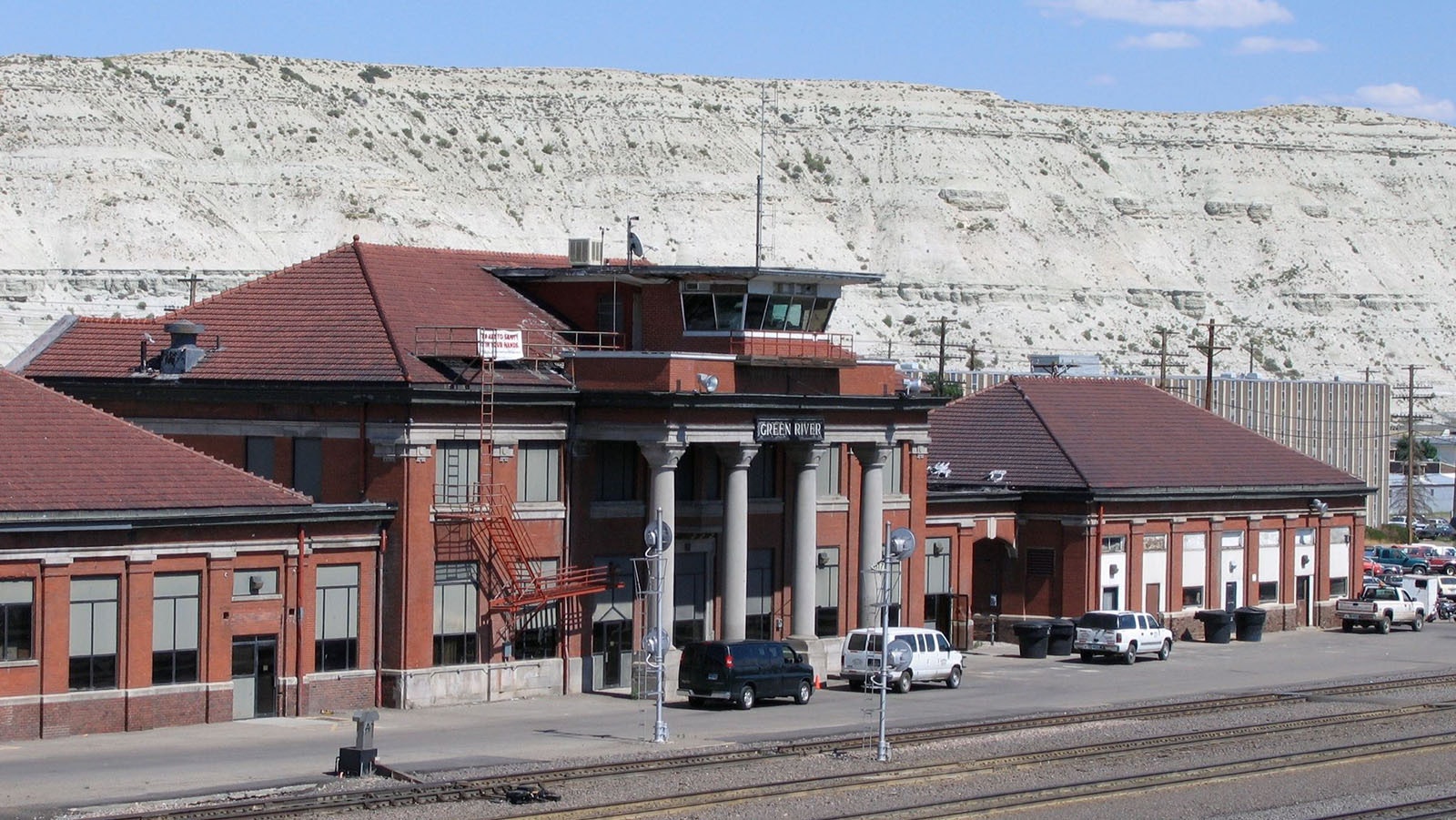GREEN RIVER — More than a century ago when trains were the lifeblood of the American West, the Green River Depot buzzed with life as the heart of a growing southwestern Wyoming town.
These days, it’s much quieter at the depot, a reminder of how the town slowed when the passenger trains stopped. Now a reminder of Green River’s heyday, locals are desperately trying to find a new future for the historic depot that doesn’t involve a wrecking ball.
Built in 1910, the depot once linked Green River to cities like San Francisco and Chicago, its red brick walls housing a flurry of activity with passengers and commerce.
But when Union Pacific ceased passenger service in 1983, the depot’s purpose shifted, leaving it to weather but still standing.
Now its next chapter depends on a community eager to bring it back to life.
‘A Railroad Town’
"We used to get on the train in Evanston, ride to Denver, switch trains there and go to Kansas to visit my grandparents," Stan Blake, a former Wyoming legislator and retired Union Pacific switchman, told Cowboy State Daily in 2023.
Blake said the Green River Depot had high ceilings and long rows of benches like church pews. He spent 20 years of his career working in the depot and nearby railyard, and he believes the building should be refurbished and used for weddings and other community events.
There’s value in recognizing the depot’s contribution to building up Green River, Ryan Rust, the city’s government affairs and grants managers, has said.
"Green River has long been a railroad town, and I think the very fact that it exists today is largely based on the fact that the railroad came right through town," Rust said. "The depot is a cornerstone of the community, and we all recognize it as an important building but due to the cost, size and various restrictions it's been difficult to get a lot work accomplished."
Imagining The Future
The last major discussions about the depot’s potential were held in mid-2023 during public workshops organized by the Environmental Protection Agency and consulting firm Vita Nuova.
These visioning sessions offered residents a chance to brainstorm ideas for revitalizing the space, sparking a wave of enthusiasm.
“It was incredible to hear what the community wants,” said Green River Public Works Director Mark Westenskow. “People are passionate about seeing this space come back to life.”
The most popular idea was to turn the 20,325-square-foot depot into an event and conference space, he said. But there’s also interest in using it for a museum, co-op market and even indoor recreation.
The building’s layout offers flexibility. Its main structure includes an open ground floor and an upper level that once housed offices. Additional wings and the depot’s distinctive crow’s nest provide unique opportunities for creative reuse.
“I’d love to see it used in a way that is central to the community,” Westenskow said. “Something that’s the heart of Green River, both physically and culturally.”
Aiden Brady, chair of the Green River Historic Preservation Commission, sees the depot’s future as an opportunity to honor the town’s past while building something meaningful for residents now and in the future.
“The depot has so much potential,” he said. “It’s not just about restoring the building, it’s about creating something that people will use and love.”

From Cleanup To Construction
Union Pacific donated the depot to the city in 2013, but the building’s restoration faced a significant — and expensive — hurdle: hazardous materials, including asbestos and lead-based paint.
In 2018, grants from the EPA and the Wyoming Department of Environmental Quality funded the removal of these materials, paving the way for preservation efforts to begin.
“That grant covered about two-thirds of the cost, and then we had a certain amount we were putting into it and then DEQ stepped in and filled that gap,” Westenskow said.
While the project has made progress, significant challenges remain.
Repairing the building’s exterior structures is critical, with a focus on fixing the roof, addressing drainage issues and reinforcing the brickwork to prevent further damage.
“If we can get that part done, we can protect the building and prevent further issues and then we can decide what we want to do with it, but that has to come first,” Westenskow said.
This phase alone is expected to cost more than $3 million. Fully restoring the depot for public or commercial use, however, could cost as much as $20 million — double the pre-pandemic estimate of $10 million due to rising costs and complexity of the work.
“Before COVID, I had an estimate on getting the building up to shape,” Westenskow said. “That had been done back in like 2012 or something like that, and after COVID, all the numbers doubled.”
Other Issues
The city’s biggest obstacle is finding the money to bring its ideas to life, but the depot’s lease agreement complicates things even further.
While the city owns the building, the land it sits on still belongs to Union Pacific and is leased under a 30-year agreement that began in 2013. The railroad can terminate the lease with just 30 days’ notice, leaving the city with little room to guarantee stability.
This uncertainty has made securing long-term funding or attracting tenants more challenging, as investors and grant agencies often require assurances of stability.
City officials have discussed the possibility of renegotiating the lease with Union Pacific to provide more certainty, which could open doors to new funding opportunities.
Additionally, Union Pacific’s foundation supports projects that preserve historic structures, potentially creating avenues for collaboration.

Next Steps
The city’s immediate focus is forming a steering committee to guide the project.
Discussions on this front have already begun, with local officials and residents identifying the need for a collaborative approach.
“Step one is getting some sort of steering committee off the ground,” Brady said. “We talked about that at the last preservation commission meeting, so we are moving down the path — more so than we were pre-COVID.”
Beyond the committee, public officials are also considering the formation of a nonprofit organization.
A nonprofit could open doors to funding opportunities unavailable to public agencies, such as grants targeted specifically at private entities. This dual approach — leveraging both city resources and private funding — could provide the financial backbone needed to make the depot’s revival possible.
“The city can apply for grants on the governmental side, but a nonprofit could tackle funding opportunities on the private side,” Westenskow said. “It’s going to take both if we want to get this done.”
In the meantime, the depot will continue to be a reminder of a time when Green River was an important stop on America’s move West.





